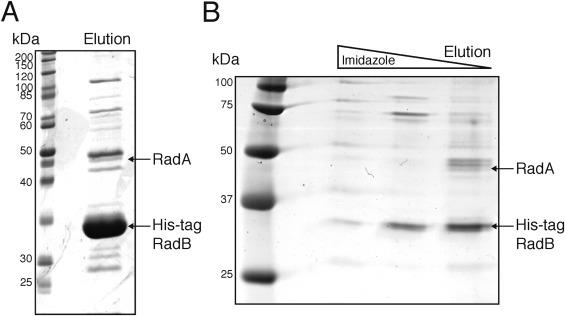RadB acts in homologous recombination in the archaeon Haloferax volcanii,consistent with a role as recombination mediator |
| |
| Affiliation: | 1. School of Life Sciences, University of Nottingham, Queen’s Medical Centre, Nottingham, UK;2. School of Biosciences, University of Nottingham, Sutton Bonington, UK |
| |
| Abstract: | 
Homologous recombination plays a central role in the repair of double-strand DNA breaks, the restart of stalled replication forks and the generation of genetic diversity. Regulation of recombination is essential since defects can lead to genome instability and chromosomal rearrangements. Strand exchange is a key step of recombination – it is catalysed by RecA in bacteria, Rad51/Dmc1 in eukaryotes and RadA in archaea. RadB, a paralogue of RadA, is present in many archaeal species. RadB has previously been proposed to function as a recombination mediator, assisting in RadA-mediated strand exchange. In this study, we use the archaeon Haloferax volcanii to provide evidence to support this hypothesis. We show that RadB is required for efficient recombination and survival following treatment with DNA-damaging agents, and we identify two point mutations in radA that suppress the ΔradB phenotype. Analysis of these point mutations leads us to propose that the role of RadB is to act as a recombination mediator, which it does by inducing a conformational change in RadA and thereby promoting its polymerisation on DNA. |
| |
| Keywords: | Homologous recombination Archaea RecA-family recombinase Strand exchange Recombination mediator |
| 本文献已被 ScienceDirect 等数据库收录! |
|

